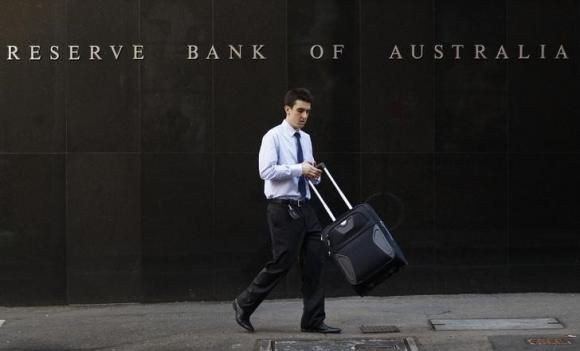Australia's RBA Cuts Rates To Record Low, Market Hankers For More

(Reuters) - Australia's central bank cut its cash rate to an all-time trough of 2.25 percent on Tuesday, breaking an 18-month hiatus on stimulus as it seeks to spur a sluggish economy while keeping downward pressure on the local dollar.
The currency duly sank more than a full U.S. cent after the Reserve Bank of Australia (RBA) ended its first policy meeting of the year by announcing the quarter point cut.
"Overall, the Bank's assessment is that output growth will probably remain a little below trend for somewhat longer, and the rate of unemployment peak a little higher, than earlier expected," said RBA Governor Glenn Stevens in a brief statement.
"This action is expected to add some further support to demand, so as to foster sustainable growth and inflation outcomes consistent with the target."
Markets had been leaning toward a cut this week, though only 9 of 29 analysts in a Reuters poll had tipped a move.
Interbank futures jumped on the news while pricing in a near 50-50 probability of a further move to 2.00 percent at the next policy meeting in March.
Yields on 10-year government debt had already been trading below the cash rate and dropped further to a record low of 2.36 percent, while Australian stocks hit their highest since 2008.
"It's very clear their assessment of the outlook for activity is weaker," said Su-Lin Ong, a senior economist at RBC Capital Markets, adding that the RBA was now likely to trim forecasts for growth and inflation in its quarterly statement on monetary policy due out on Feb. 6.
"We have rates at 2 percent and the risk is that it heads lower," said Ong. "We are stuck in this sub-par period of growth for a long time."
LOWER A$ NEEDED
It was the RBA's first easing since August 2013 and marked a sharp turnaround from its previous meeting in December when it had signaled a period of stability for policy.
The move was partly aimed at offsetting painful price declines for many of Australia's resource exports which are hurting both company profits and mining investment.
The situation has been made all the tougher by a protracted slowdown in China, Australia's biggest export market.
The move was given extra urgency by the recent rush to ease by other central banks meant the RBA had to follow suit if only to stop its currency from rising to uncompetitive levels.
Indeed, Stevens cautioned that "a lower exchange rate is likely to be needed to achieve balanced growth in the economy." The local dollar obliged by falling over a cent to $0.7670.
The outlook for domestic inflation had also moderated as petrol prices plunged and wage growth stayed stuck at decade lows. Core inflation is now expected to hold near the floor of the RBA's 2-3 percent target band for much of this year.
An added wrinkle is political uncertainty as speculation swirls around the future of Prime Minister Tony Abbott.
A bruising voter backlash in state elections and a slump in his personal approval ratings has sparked chatter of a party revolt against his leadership.
Australia's benchmark S&P/ASX 200 share index surged to its highest level in almost seven years after the RBA cut.
The index extended gains, adding 1.2 percent to an intra-day peak of 5,692.7 points, its highest since May 2008.
© Copyright IBTimes 2024. All rights reserved.




















